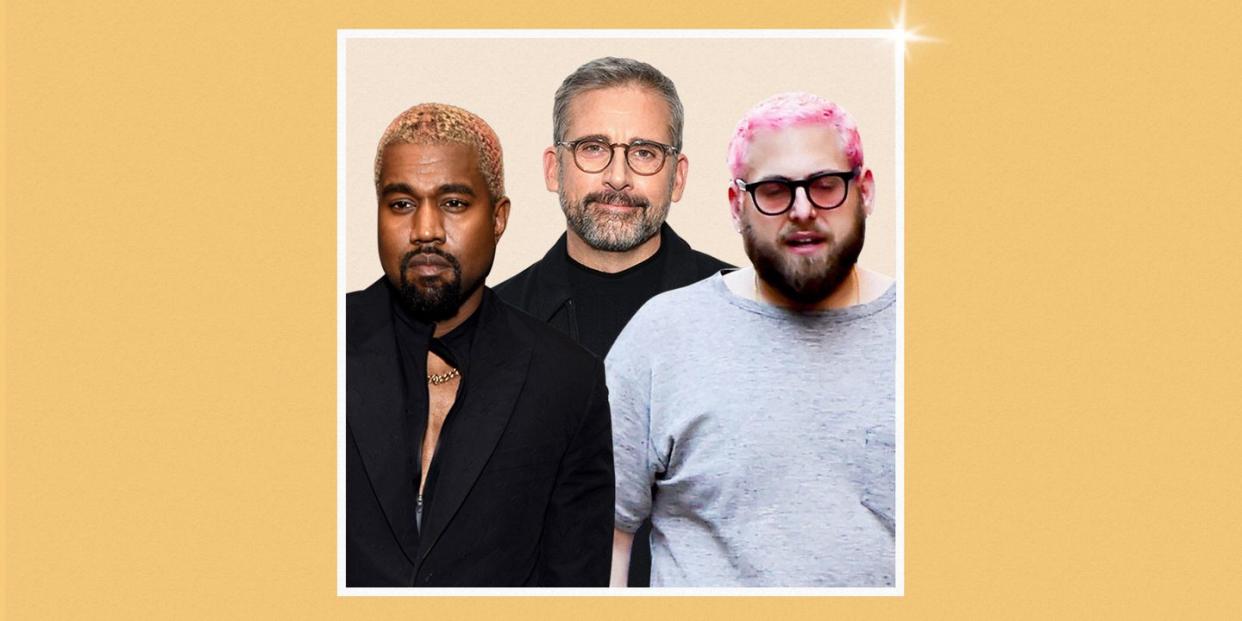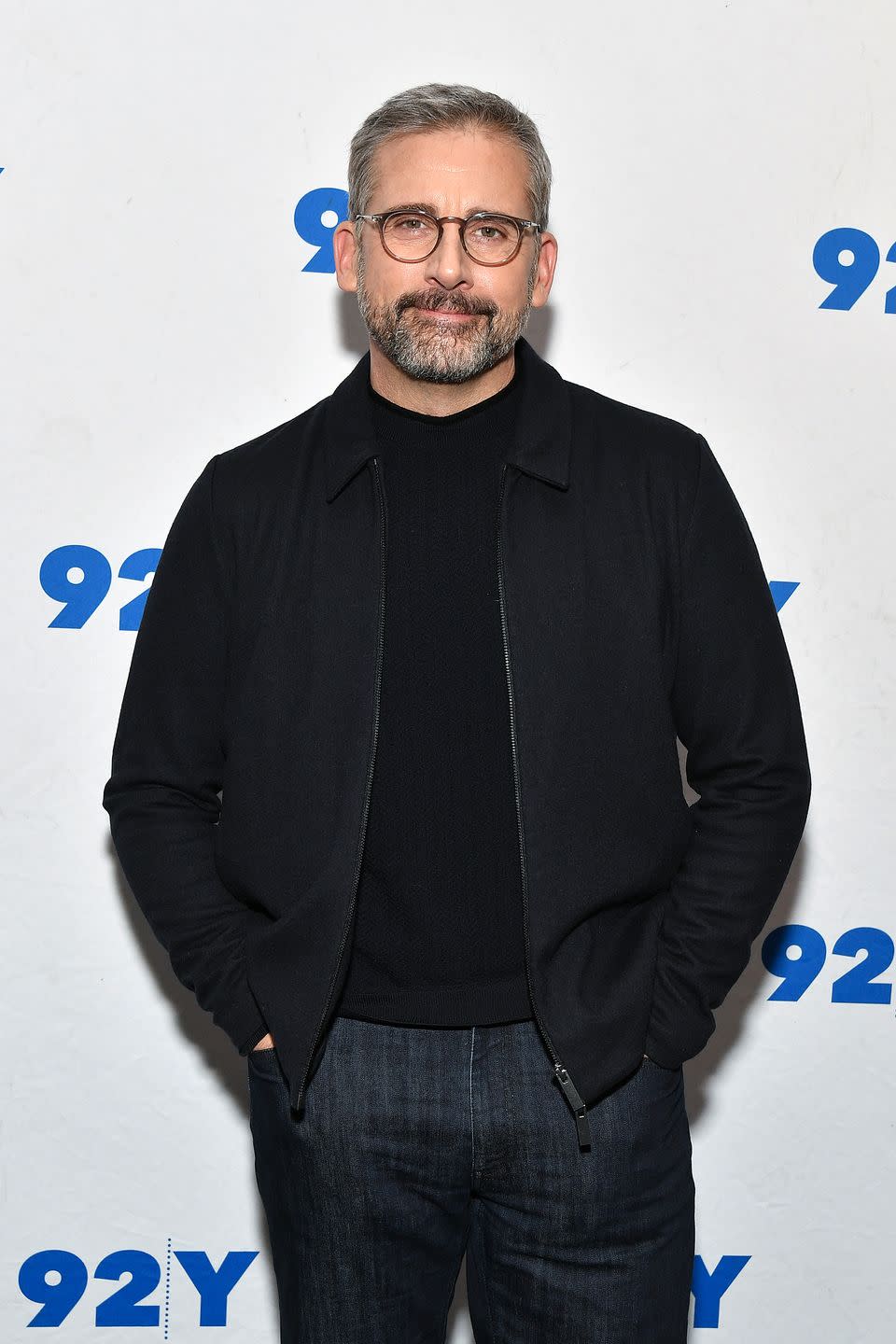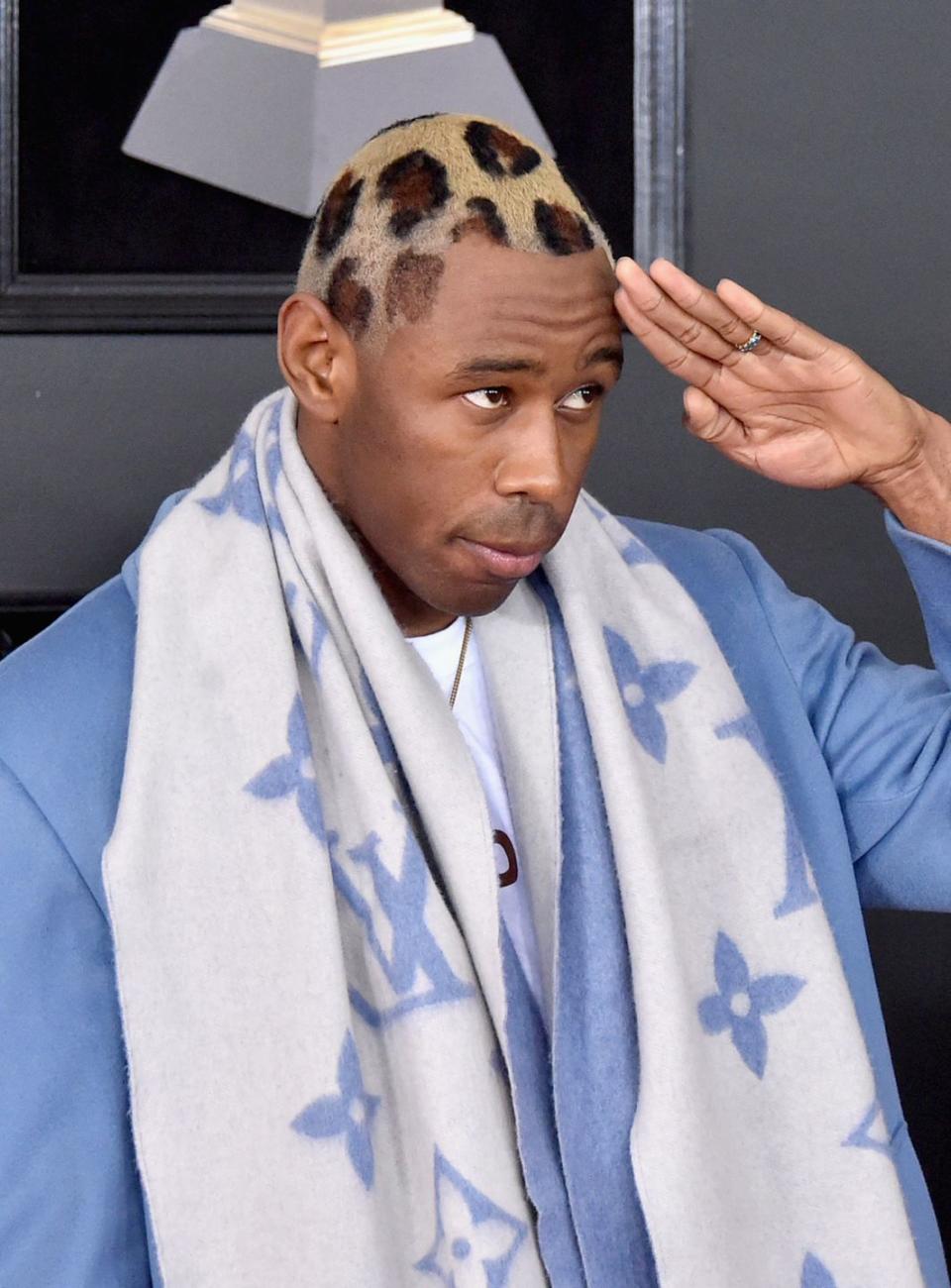Go Ahead and Color Your Hair at Home. Here's How to Do It Right.

Are you stuck inside all day with nothing to distract you from everything you need to be doing? Sick and tired of looking at your weary, drawn face and desperate to switch things up in any way you can? Ask the internet if coloring your hair could be right for you. Coloring your hair has been clinically proven (read: has in no way whatsoever been proven, clinically or otherwise) to help alleviate even the most severe cases of lockdown malaise, so you, too, can live your safe, socially distanced life to the fullest.
Men around the world are dyeing their hair in droves these days, and it ain't hard to see why. It's the easiest way to immediately add some edge to your look without committing to, like, a full sleeve of ink or a particularly aggressive piercing (seriously, man —leave your septum out of this), and most important: it's a grooming hack you can give a go all on your own.
Plus, adding a little hair dye to your regular grooming routine doesn't have to involve an outlandish color, or any color at all for that matter. If you've been noticing some ominous-looking gray hairs lately and aren't ready to embrace your silver fox status, a low-key dye job is just the way to stave off the inevitable passage of time (or, you know, at least the evidence of it).
If you're weighing whether to take the plunge, here's everything you need you to know to make the right decisions now and down the line, along with some signature tricks of the trade courtesy of the crew at NYC's Bumble and Bumble (who were kind enough to chop it up with us pre-pandemic).
Know Your Color
To the degree that you still can, you should try and hand the reins over to your trusted stylist, either by video consultation or through constant communication throughout the process. You're their best calling card, after all, so they definitely won't want to steer you in the wrong direction. But some sort of idea about what color you're interested in from the outset is going to be helpful for them as reference, whether in-person or in the DMs. "Find images of the hair color that you like, ideally a few of them," says Kara Hoskins of Bumble and Bumble. "If we know what specific shade and tone you're looking to achieve, we can figure out the best way for you to get as close to it as possible. And we'll give recommendations based on this, too."

Do Try This at Home (At Least for Now)
When it comes to coloring your hair, we'd normally suggest following the same rule of thumb you do when it comes to cutting it: Let the pros handle it. Colorists are professionals and know a good deal more than you about getting the shades right. "It is more expensive to go to a salon for your color, but it's so important to see a colorist to make sure you get the right color without damaging your hair," says Bumble and Bumble colorist Mai (that's just Mai to you, thank you very much). Although Mai suggests against using a hair dye kit at home if you're looking for the most consistent results, not having access to a colorist of Mai's caliber leaves you with little choice, and thankfully, there are some solid options available if you're trying to approximate the salon experience.
The Kit to Help You Take the Plunge
The Touch-Up in a Pinch
Create a Cohesive Look
The best way to go about choosing a hair color is to consider what fits your overall style. Skin tone and coloring are clues, but a good colorist can also help you pull off a variety of shades. Thoughts about your personal style and aesthetic—for example, how you like to dress—should inform your color choice. "If you are a bit more edgy with your style, you can be a bit more edgy with your hair color," Hoskins explains. "But if you've got a suit-and-tie, white-collar type of job, colorful hair isn't something I'd recommend. Stick to natural colors and err on the side of caution with going blonde, unless you're blonde to begin with. Style and hair should meld together."

Don't Be Afraid of the Gray
Coloring isn't, and shouldn't be, about only covering up your gray hairs. "Men look great with gray hair. It's distinguished and elegant and earned…embrace it!" Mai says. But if your grays are something that you do want to downplay, it's better to take a camouflage approach than to opt for a total cover-up. "Less is more and it should look effortless, not intentional. Gray roots on dark hair looks terrible and ages you even more than gray hair would on its own," Mai maintains.

Stay Dry
Plan ahead before you begin the dying process. For three or four days prior to when you think you'll be committing to your new look, keep your hair dry by avoiding washing it in the shower. This allows natural oils to build up on the hair and scalp, which serve as a barrier against chemicals used during the bleaching or dying processes.

Protect Your Mane
Coloring your hair can lead to damage and dryness, so if you have thinning hair you should likely avoid any heavier dye jobs. "I definitely wouldn't recommend double processing (bleaching and toning to a very light blonde) for guys with concerns about hair loss—bleach is a harsh chemical that can cause breakage," says Hoskins. And for guys of any hair type, it's good to follow up your first go-around with a regular conditioning treatment at least once a week.

Take Your Color on the Road
Once you've got a perfectly colored mane, you're going to want to keep it that way as long as possible. Even the best dye jobs require proper care to maintain their hue. You'll need to use a shampoo that's specifically designed for color-treated hair—one that will maintain the vibrancy of your new 'do and protect against any dulling and fading (make sure it's sulfate free). And for newly bleached hair, a purple toning shampoo is typically necessary to prevent brassiness (i.e., any visible yellow or orange tones).
The Color-Saving Shampoo
You Might Also Like


